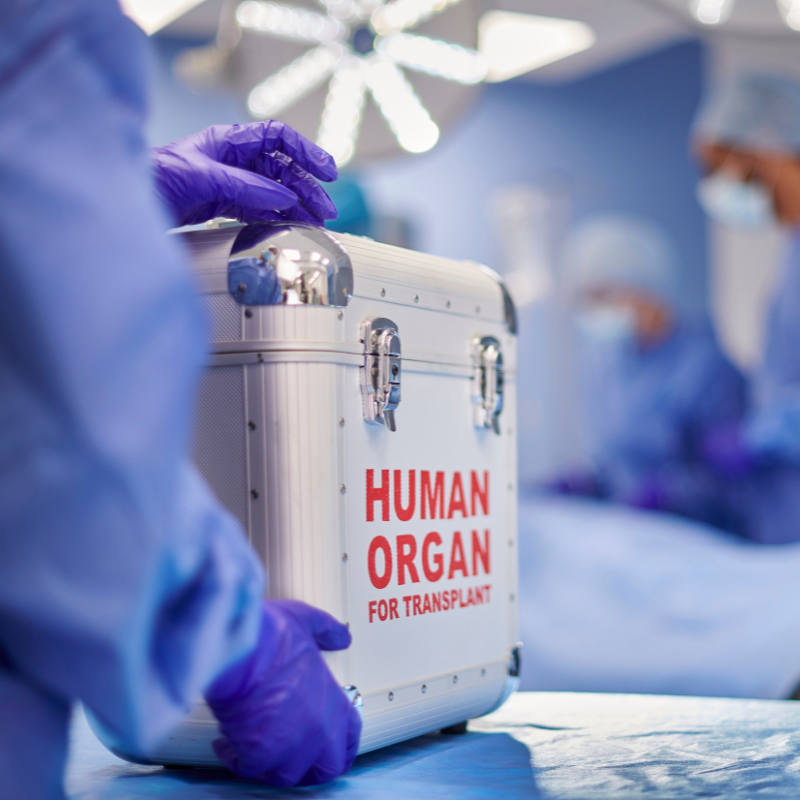2014 research grant awardees
How does the research grant program work?
In 2014, we awarded 15 research grants to PKD researchers. We will spend nearly $2.4 million over the next two years on these grants. The awardees represent top researchers and physician scientists throughout the United States, as well as Canada and Italy.

View more grant and fellowship awardees

Dr. Vincent H. Gattone Research Award
Erica Golemis, Ph.D.
The Research Institute of Fox Chase Cancer Center
Project Summary
Advancing HSP90 Inhibitors Towards Clinical Trials for ADPKD
Heat shock protein 90 (HSP90) has emerged as an important target for drug development for cancer, and HSP90 inhibitors are being tested in clinical trials for cancer. In preliminary studies, an HSP90 inhibitor was very effective in stabilizing kidney function and limiting cyst growth in a mouse model for ADPKD with a mutated PKD1 gene. In this project, mouse models will be used to extend this work in three ways: (1) evaluating whether HSP90 inhibition blocks the growth of ADPKD with a mutated PKD2 gene, (2) determining the effect of long-term dosing of an HSP90 inhibitor on kidney function and (3) determining whether the combination of an HSP90 inhibitor with another promising inhibitor, 2-deoxy- D-Glucose (2DG), further improves effectiveness in stabilizing kidney function and limiting cyst growth.

The Eileen Creamer O’Neill Award
Alessandra Boletta, Ph.D.
Fondazione Centro San Raffaele
Project Summary
Targeting Glucose Metabolism in PKD: A Preclinical Proof-of-Concept Study
ADPKD cells are highly dependent on glucose, a simple sugar, for their energy production. 2-deoxy- D-Glucose (2DG) is a simple molecule resembling glucose that was found to slow down cyst growth in rodent models of PKD. This project will test whether or not 2DG improves the outcome in mouse models of late-onset and slowly progressive PKD that more closely resemble the human version of the disease. Furthermore, the project will look for additional changes in metabolism in the body of PKD patients.

York Pei, M.D.
University of Toronto General Hospital
Project Summary
Health Care Utilization and Costs of ADPKD
Recent advances have led to the identification of multiple classes of drugs that have the potential to modify kidney disease progression in ADPKD. Looking forward, multiple classes of drugs will likely become available for treatment of ADPKD in the coming decade. However, long-term use of these medications is expected to be expensive which poses a challenge for healthcare policy decision makers to decide on how they will be used and reimbursed. In this proposal, we will define the healthcare utilization and cost of ADPKD using several unique research databases that track healthcare utilization and costs in the province of Ontario, Canada. We will also perform health economic analyses to identify the circumstances where new disease modifying treatments are both justified and desirable to offset the healthcare costs associated with kidney disease progression in ADPKD. This knowledge will be useful to inform healthcare policy makers how best to provide coverage and reimbursement for a DMD for ADPKD.

Marie Trudel, Ph.D.
Institut de Recherches Cliniques de Montreal
Project Summary
Effects of Genetic and Pharmacological Ablation (Deletion) of KCNN4 on Disease Progression in Two Orthologous Mouse Models of PKD
Senicapoc, a non-toxic inhibitor of the potassium channel KCNN4, will be tested as a new oral drug treatment for ADPKD. Experiments in cells show that KCNN4 function drives the renal cyst expansion believed to cause the progression of ADPKD towards renal failure. Preliminary results indicate two genetically engineered mouse models of ADPKD lacking KCNN4 show slower disease progression, and one model resembles the natural history of human PKD. The project will therefore test senicapoc’s ability to slow progression of PKD in both mouse models with intact KCNN4 genes. If senicapoc slows disease progression in these mice, then senicapoc tests in ADPKD patients can be initiated promptly, since senicapoc is known to have a lasting effect and to be non-toxic in human subjects without kidney disease.

The Jean A. Bost Award
James Calvet, Ph.D.
University of Kansas Medical Center
Project Summary
Role of CFTR and NKCC1 in PKD
The cyst-filling fluid secretion process, which is critical to the cyst growth of ADPKD, is dependent on two channels, CFTR and NKCC1. This project will determine how essential these channels are for cyst growth and overall kidney enlargement in mouse models of ADPKD. This project will also test (1) the effectiveness of a potential new treatment for PKD that targets cyst-filling fluid secretion processes and (2) whether decreased calcium in kidney cells results in increased CFTR and NKCC1 protein levels.

The Haggard Family Award
Timothy Fields, M.D., Ph.D., and Katherine Swenson-Fields, Ph.D.
University of Kansas Medical Center
Project Summary
Preclinical Assessment of MCP-1/CCR2 Inhibition as Treatment for ADPKD
White blood cells called macrophages promote cyst growth and disease progression in PKD mouse models. Cyst cells attract macrophages primarily by making a protein called monocyte chemotactic protein -1 (MCP- 1). Compelling preliminary results suggest that deleting the MCP-1 gene or blocking the macrophage infiltration with a drug (CCR2A) can slow PKD progression. This project will extend these studies in mice. Treatment to block the infiltration with CCR2A alone or in combination with tolvaptan, a drug that has shown clinical promise for PKD, will be tested. A successful outcome in these studies could facilitate the repurposing of CCR2As, alone or in combination with tolvaptan, for PKD treatment. The goal of this work is to establish new therapies for PKD that slow disease progression and relieve associated suffering.

Anna Rachel Gallagher, Ph.D.
Yale University
Project Summary
Funded in Partnership with Friends and Family of Infant Sophie St. Aubin
Preliminary evidence that suggests the cells without the PKD1 gene can be treated with an anti-tumor drug, 11beta-dichloro, to cause cell death which would result in slower-growing cysts. This project will study the effect of this drug on (1) cysts from a mouse model of PKD1 and (2) on cysts derived from cells that lack PKDH1 (ARPKD). The goal is providing a new treatment for PKD. *Related to autosomal recessive PKD (ARPKD) and autosomal dominant PKD (ADPKD)

The Mrs. Pamela Whitcomb Larsen Award
Jordan Kreidberg, M.D., Ph.D.
Boston Children’s Hospital
Project Summary
The Role of Beta-catenin as Signal Integrator in PKD
The exact cause of the cysts in ADPKD is not completely understood. Over the past five years, the Kreidberg laboratory at Boston Children’s Hospital has studied kidneys of mice with mutations in the same PKD genes that cause ADPKD in humans and found abnormalities in several cell pathways. Many pharmaceutical companies are developing drugs that target these same pathways, but drugs will not be developed for use in ADPKD in humans without more clarity of the abnormalities. This project will further study these pathways to more clearly define and understand the cause of the cysts.

Karel Liem Jr., M.D., Ph.D.
Yale University
Project Summary
Role of Tulp3 and the Hedgehog Pathway in PKD
A new mouse model has been created that develops polycystic kidney disease at birth. Studies have shown that a particular pathway is overactive in these mice. When the over activity of the pathway is decreased, this lessens the cystic kidney disease. The project will test the role of the pathway in the new mouse model and an ADPKD-1 animal model system with both young and adult animals. Identifying the pathway and a target for drugs to treat PKD will be greatly informative to treat PKD in children and adults.

Ming Ma, Ph.D.
Yale University
Project Summary
The Effects of Genetic Reactivation of Functional Polycystins on Progression of PKD
Recently, polycystins, important proteins in ADPKD, were shown to block signals in kidney cells that cause cyst growth. The next step is to think about reintroducing normal PKD1 or PKD2 genes back to cystic tissue and, therefore, block cyst growth. ADPKD mouse models have been made that allow us to do exactly that—re-activate normal, silenced PKD1 or PKD2 genes. This project will use these models to determine whether cyst growth can be slowed or perhaps even reversed and when is the best stage in the disease to start this intervention. It will also examine the effects of altering PKD1 expression in ARPKD models. This study serves as a proof of principle (an early stage of clinical drug development when a compound has shown potential in animal models and early safety testing) for what the expectations and goals of therapy in ADPKD may be.

Vishal Patel, M.D.
University of Texas Southwestern Medical Center
Project Summary
Funded in partnership with KidneyTexas, Inc.
MicroRNAs (miRNAs) inhibit the function of genes. Abnormal levels of miRNA expression are observed in numerous diseases, including PKD. Drugs designed to correct miRNA levels are emerging as promising new ways to treat diseases. A family of miRNAs called miR-17~92 have been identified, which promotes kidney cyst growth in mice. In this application, the aim is to determine whether miR-17~92 promotes cyst growth in mouse models of ADPKD. If successful, the study will identify miR-17~92 as a new drug target for the treatment of ADPKD.

Feng Qian, Ph.D.
University of Maryland Medical Center
Project Summary
Unifying Cystogenic Mechanism of ADPKD and ARPKD
This proposal tackles a long-standing problem in the field of autosomal recessive polycystic kidney disease (ARPKD), which is caused by mutations of the PKHD1 gene. It will identify and characterize the important cellular defects caused by mutations of the PKHD1 gene. Insights gained will advance our fundamental understanding of the function of the PKHD1 gene and enable us to develop effective therapies for ARPKD.

Zhaoxia Sun, Ph.D.
Yale University
Project Summary
HDAC Inhibitor Mediated Kidney Cyst Reduction
By studying vascular integrity in zebrafish polycystic kidney disease (PKD) models, this project will provide insight into extra-renal symptoms of PKD, particularly vascular symptoms.

Bradley Yoder, Ph.D.
University of Alabama at Birmingham
Project Summary
In Vivo Analysis of Cilia Mechanosensation in the Kidney
Multiple human syndromes exhibit cysts in the kidney that cause significant morbidity and mortality adding substantially to U.S. health care costs. The cellular basis for most cystic kidney disorders is dysfunctional cilia; however, the role that the cilium plays in the kidney is not well understood. In this proposal we test the hypothesis that cilia are needed for regulating signaling between macrophages and the epithelium following injury, and that when cilia are disrupted the deregulation of these signals establishes an environment that causes increased cell proliferation, cyst expansion and renal fibrosis.
September 2020 research update from Chris Rusconi, the PKD Foundation’s Chief Research Officer.
Presentation to the PKDOC at the August 2020 Consortium meeting
Page last reviewed June 2021







